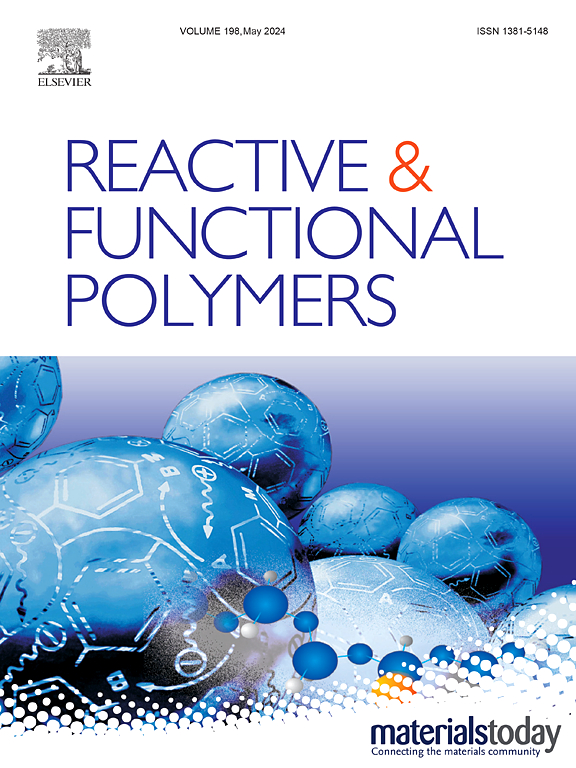Photopolymerized PEDOT-coated polydopamine: A Green approach for supercapacitor electrode materials
IF 4.5
3区 工程技术
Q1 CHEMISTRY, APPLIED
引用次数: 0
Abstract
Conjugated conductive polymers (CCPs) are promising electrode materials for next-generation supercapacitors (SCs), yet their scalable and eco-friendly synthesis remains a challenge. Here, we report a light-driven, in-situ polymerization of EDOT onto polydopamine (PDA@PEDOT), offering a sustainable, photoinitiated route for high-performance SC electrodes. Using an organic, environmentally safe photoinitiator and ethanol as a green solvent, this method achieves uniform PEDOT deposition on PDA with minimal energy input. Using a three-electrode method, the resulting PDA@PEDOT electrode exhibits exceptional electrochemical performance, including a high specific capacitance of 275 F g−1 at 1.0 A g−1, an energy density of 34.04 W h kg−1, and excellent adhesion properties. The synergistic non-covalent interactions between PDA's amine, catechol, quinone functionalities and PEDOT are credited to enhance ion transport through the electrode, improving SC efficiency. These exceptional properties, alongside strong adhesion and uniform deposition of PEDOT on PDA, demonstrate the novelty of the advanced photopolymerization approach. Our eco-friendly photopolymerization method paves the way for sustainable, high-performance SC electrode fabrication, bridging the gap between sustainable chemistry and next-generation energy storage.

光聚合pedot包覆聚多巴胺:超级电容器电极材料的绿色途径
共轭导电聚合物(CCPs)是下一代超级电容器(SCs)极具前景的电极材料,但其可扩展性和环保性的合成仍然是一个挑战。在这里,我们报道了一种光驱动的EDOT在聚多巴胺(PDA@PEDOT)上的原位聚合,为高性能SC电极提供了一种可持续的光引发途径。该方法使用有机、环保的光引发剂和乙醇作为绿色溶剂,以最小的能量输入在PDA上实现了均匀的PEDOT沉积。使用三电极方法,得到的PDA@PEDOT电极具有优异的电化学性能,包括在1.0 a g−1下的275 F g−1的高比电容,34.04 W h kg−1的能量密度和优异的粘附性能。PDA的胺,儿茶酚,醌功能和PEDOT之间的协同非共价相互作用被认为可以增强离子通过电极的传输,提高SC效率。这些特殊的性能,加上PEDOT在PDA上的强附着力和均匀沉积,证明了先进光聚合方法的新颖性。我们的环保光聚合方法为可持续、高性能的SC电极制造铺平了道路,弥合了可持续化学和下一代储能之间的差距。
本文章由计算机程序翻译,如有差异,请以英文原文为准。
求助全文
约1分钟内获得全文
求助全文
来源期刊

Reactive & Functional Polymers
工程技术-高分子科学
CiteScore
8.90
自引率
5.90%
发文量
259
审稿时长
27 days
期刊介绍:
Reactive & Functional Polymers provides a forum to disseminate original ideas, concepts and developments in the science and technology of polymers with functional groups, which impart specific chemical reactivity or physical, chemical, structural, biological, and pharmacological functionality. The scope covers organic polymers, acting for instance as reagents, catalysts, templates, ion-exchangers, selective sorbents, chelating or antimicrobial agents, drug carriers, sensors, membranes, and hydrogels. This also includes reactive cross-linkable prepolymers and high-performance thermosetting polymers, natural or degradable polymers, conducting polymers, and porous polymers.
Original research articles must contain thorough molecular and material characterization data on synthesis of the above polymers in combination with their applications. Applications include but are not limited to catalysis, water or effluent treatment, separations and recovery, electronics and information storage, energy conversion, encapsulation, or adhesion.
 求助内容:
求助内容: 应助结果提醒方式:
应助结果提醒方式:


